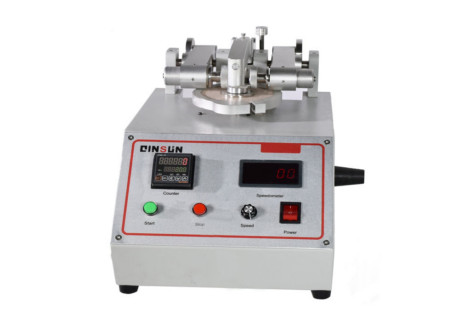- Qinsun Instruments Co., Ltd.
- Tell:+86-21-6780 0179
- Phone:+86-17740808215
- Address:No. 2578 Minhang District Gu Dai Road, Shanghai
- Contact:Mr. Li
- QQ:846490659
Which method is used to measure abrasion and Pilling resistance?

Evaluating the abrasion and pilling resistance of a material can be done using a number of different methods, depending on factors such as the material to be tested and the conditions of the application. The following are some common methods of measurement:
1. Martindale Abrasion Test: This method is widely used to assess the abrasion resistance of materials such as textiles and furniture fabrics. During the test, a circular fabric sample is sandwiched between an abrasion head and a standard abrasive material and abraded at a developed number of cycles, pressures and friction speeds. The abrasion resistance is evaluated by counting the number of cycles or other indicators that the specimen passes through before it wears out.
2. Wyzenbeek Abrasion Test: This is another method commonly used to evaluate the abrasion resistance of fabrics by simulating the process of repetitive abrasion of a fabric in service. For the test, a fabric specimen is sandwiched between two headrests containing standard abrasive materials and rubbed. The abrasion resistance is assessed by counting the number of abrasions the specimen undergoes before it wears out.
3. Taber Abrasion Test: This method is suitable for the measurement of a wide range of materials, including various metals, polymers, ceramics and coatings. For the test, a sample of material is fixed on a rotating flat or wheel sample holder and is subjected to wear test with a certain load. The abrasion resistance is assessed by calculating the extent to which the specimen loses mass.

4. Braided Ball Test: This method is commonly used to assess the ball resistance of a fabric, i.e. the number of small balls produced on the fabric. For the test, a fabric specimen is placed in a special ball tester and after a certain number of cycles, the number is used to record the number of small balls produced.
In addition to the methods mentioned above, there are several other common methods used to measure abrasion and pilling resistance, including:
1. Zipper abrasion test: This method is commonly used to assess the abrasion resistance of fabric surfaces. During the test, the zipper is repeatedly pulled over the fabric and the fabric surface is observed for abrasion, breakage or pilling.
2. Area Abrasion Test: This method is suitable for assessing the abrasion resistance of coatings, paints, plastics and other materials. During the test, a specific area is delineated on the surface of the material and then the area is tested for wear using a wear device or instrument. The abrasion resistance of the material is evaluated by observing and measuring the changes in the abraded area.
3. Disc Wear Test: This method is widely used to evaluate the wear resistance of metallic and ceramic materials. For the test, a sample of the material is fixed on a rotating disk, which is brought into contact with an abrasive or other material and subjected to a certain load for the wear test. The wear resistance of the material is assessed by measuring the loss of material mass and observing changes in the wear surface.
It is important to note that each test method has its own scope of application and limitations. When selecting a suitable test method, factors such as material type, application environment, test purpose and specific requirements should be considered and evaluated comprehensively based on the actual situation. In addition, the abrasion resistance and pilling resistance of the material can be comprehensively assessed in conjunction with actual use and historical experience.





